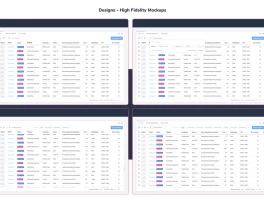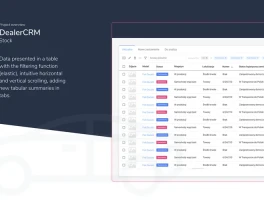The Anatomy of a Projection: Salesforce's $60 Billion Question
On October 16th, for a few brief hours, you could almost feel the collective sigh of relief from Salesforce investors. As the market closed, the company dropped a new long-term projection: revenues surpassing $60 billion by 2030. On the screen, the little green numbers flickered to life. The stock (CRM) jumped as much as 5% in extended trading, a rare bit of good news in a year that has been, to put it clinically, a disaster.
But a projection is just a story told with future numbers. And while this one was calibrated to perfection—beating the $58 billion analyst consensus just enough to grab headlines—it papers over a much more complicated and uncomfortable reality. The company is asking investors to look five years into the future, perhaps because looking at the last ten months has been so painful. The stock is down 28% year-to-date, a fact that gets to the heart of the question, What’s Happening With CRM Stock? It sits more than a third below its peak from just last December.
So, the central question isn't whether Salesforce can hit $60 billion. The more precise question is this: What has to go right for that number to become a reality, and is it a plausible bet given the current trajectory? Management has drawn a line in the sand. Now we need to analyze the terrain.
The Widening Gap Between Ambition and Reality
Let's start with the math, because the math is unforgiving. To get from its current revenue run-rate to over $60 billion by the start of 2030, Salesforce needs to sustain a compound annual growth rate (CAGR) of somewhere in the high single digits. On the surface, this seems achievable. After all, its three-year revenue CAGR is 10.5%, well ahead of the S&P 500's 5.4%.
The problem isn't the average; it's the trend line. That 10.5% figure includes years of much faster growth. The more recent data paints a different picture. Revenue growth has decelerated to around 9%—to be more exact, 8.3% over the past twelve months. The company isn’t accelerating; it's gracefully slowing down. This projection, therefore, isn't a promise to continue the course. It’s a promise to reverse the deceleration and re-establish a stable, high-growth trajectory for the next five years. Where is that new engine of growth supposed to come from?
The implicit answer, of course, is AI. But this is where I find the current narrative genuinely puzzling. While every software company on earth is promising an AI-fueled renaissance, Salesforce's specific monetization strategy remains opaque. Investors are being asked to underwrite a growth re-acceleration based on a product category whose contribution to the bottom line is still largely theoretical. It’s like a shipping company promising to double its fleet, but pointing only to blueprints of a new, unproven ship design as evidence.

This projection also conveniently ignores the $8 billion elephant in the room: the pending acquisition of Informatica. The guidance explicitly excludes any impact from this deal. Why? It introduces a massive variable. Integrating an $8 billion company is a complex, cash-draining, and distracting process. It could either be a powerful accelerant or a significant drag on both resources and focus. By omitting it, the projection presents a cleaner, simpler path to $60 billion—a path that doesn't actually exist in the real world. Is this prudent forecasting, or is it just masterful narrative control?
A Premium Price for a Slowing Story
Even if you believe the growth story, you're left with the valuation problem. The market has already punished CRM stock this year, but it’s crucial to understand why. This isn't the repricing of a value stock; it's the market losing faith in a growth story that it’s still being asked to pay a premium for.
By several key metrics (notably price-to-sales and price-to-earnings), Salesforce trades at a steep premium to the S&P 500. That kind of valuation is justifiable when a company is delivering 20%+ annual growth. It becomes a heavy anchor when growth dips into the single digits. The 28% haircut the stock has taken this year isn't an anomaly; it's a rational, if painful, recalibration of expectations. The market is saying that Salesforce's financial performance, while strong in absolute terms—its operating and net income margins are excellent—no longer warrants the elite valuation it once commanded.
This creates a paradox for potential investors. The company’s balance sheet is solid, with a net cash position of $4 billion. Its profitability is undeniable. It's a well-run, mature software giant. But the stock price is still tethered to a narrative of high-octane growth. It’s like an aging star quarterback who still has a cannon for an arm but has lost a step of mobility. The team is still paying him a superstar salary based on his past heroics, but he can no longer scramble for those extra ten yards that used to win championships.
The market has a notoriously low tolerance for this kind of dissonance. The stock’s historical volatility is a testament to this; it plunged 58.6% during the 2022 inflation shock and a staggering 70.5% in the 2008 crisis. When sentiment on growth sours, premium-priced stocks don't just fall, they collapse. The recent projection feels like an attempt by management to convince the fans, and themselves, that the quarterback can still run like he used to.
It's a Credibility Test, Not a Forecast
Ultimately, the $60 billion figure is less a financial forecast and more a strategic communication. It’s a psychological anchor thrown out into the market to stop the bleeding and shift the conversation from a painful present to a promising future. The numbers required to get there aren't impossible, but they demand a reversal of current trends and a successful, profitable execution of an AI strategy that remains ill-defined. The market’s tepid response—a fleeting 5% pop that barely registers against a 28% year-to-date loss—suggests a deep well of skepticism. Salesforce isn't being judged on its ambition anymore. It's being judged on its execution, and right now, the numbers on the field don't quite match the promises being made from the podium.


